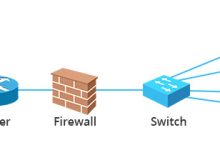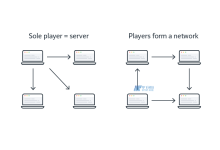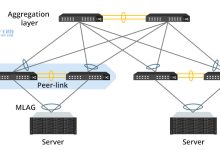SELinux是安全增强型Linux(Security Enhanced Linux)的缩写,是一种在Linux操作系统中实现Mandatory access control(MAC,强制性访问控制)的机制,能够有效地防止未授权的访问和访问的结果。在CentOS7.4发行版中,SELinux已经默认安装并开启,但是由于其较为复杂的配置和使用,导致很多用户不知道如何使用SELinux防护自己的系统,本文将简要说明CentOS7.4安装使用SELinux防护系统的方法。
一、SELinux的安装
由于CentOS7.4默认安装了SELinux,所以无需再次安装。如果要安装其他版本的SELinux,可以使用yum命令进行安装:
yum install selinux-policy
二、SELinux的开关
在CentOS7.4中,SELinux默认开启。可以使用以下命令检查SELinux的状态:
sestatus
若显示如下信息,则表示SELinux处于enforcing状态:
SELinux status: enabled
SELinuxfs mount: /sys/fs/selinux
SELinux root directory: /etc/selinux
Loaded policy name: targeted
Current mode: enforcing
Mode from config file: enforcing
Policy MLS status: enabled
Policy deny_unknown status: allowed
Max kernel policy version: 31
如果需要关闭SELinux,可以使用以下命令:
setenforce 0
如果需要重新打开SELinux,可以使用以下命令:
setenforce 1
三、SELinux的配置
1.用selinuxconfig工具修改SELinux配置文件
SELinux的配置文件位于/etc/selinux/config中。可以使用selinuxconfig工具修改此文件的内容:
sudo selinuxconfig
在弹出的配置窗口中,可以选择SELinux的三种模式:Enforcing(强制模式)、Permissive(宽容模式)和Disable(关闭模式)。
Enforcing模式:在该模式下,SELinux是启用的,对系统的访问进行强制限制,不符合规则的访问行为将被阻止。
Permissive模式:在该模式下,SELinux处于宽容模式,只会发出警告消息,不会阻止访问行为。
Disable模式:在该模式下,SELinux处于关闭状态,和传统的linux系统一样工作。
2.手动编辑SELinux配置文件
可以手动编辑SELinux配置文件/etc/selinux/config进行配置。
SELINUX=enforcing # SELinux默认开启,可以改为permissive或disabled进行设置
SELINUXTYPE=targeted # SELinux策略类型,目前有targeted和mls两种
SETLOCALDEFS=0 # 是否允许修改本地定义,一般为0
四、SELinux的使用
1.安装auditd,用于监测系统日志
在CentOS7.4中,auditd是SELinux的默认日志记录工具,可以使用以下命令进行安装:
yum install audit
安装完成后,需要启动auditd服务:
systemctl start auditd
2.添加SELinux策略
使用audit2allow工具来添加SELinux策略。audit2allow可以根据系统日志中的记录生成一些被SELinux拒绝的操作,并将这些操作转换为SELinux策略。
如下示例,在CentOS7.4中安装了Nginx服务,在启动Nginx时,SELinux会拒绝访问端口80号:
[root@localhost ~]# systemctl start nginx
Job for nginx.service fled because the control process exited with error code. See “systemctl status nginx.service” and “journalctl -xe” for detls.
[root@localhost ~]# systemctl status nginx.service
nginx.service – The nginx HTTP and reverse proxy server
Loaded: loaded (/usr/lib/systemd/system/nginx.service; disabled; vendor preset: disabled)
Active: fled (Result: exit-code) since Mon 2023-10-14 09:40:29 CST; 1min 39s ago
Process: 25198 ExecStart=/usr/in/nginx (code=exited, status=1/FLURE)
Oct 14 09:40:29 localhost.localdomn systemd[1]: Starting The nginx HTTP and reverse proxy server…
Oct 14 09:40:29 localhost.localdomn nginx[25198]: nginx: [emerg] bind() to 0.0.0.0:80 fled (13: Permission denied)
Oct 14 09:40:29 localhost.localdomn nginx[25198]: nginx: configuration file /etc/nginx/nginx.conf test fled
Oct 14 09:40:29 localhost.localdomn systemd[1]: nginx.service: control process exited, code=exited status=1
Oct 14 09:40:29 localhost.localdomn systemd[1]: Fled to start The nginx HTTP and reverse proxy server.
Oct 14 09:40:29 localhost.localdomn systemd[1]: Unit nginx.service entered fled state.
Oct 14 09:40:29 localhost.localdomn systemd[1]: nginx.service fled.
我们需要手动添加SELinux策略来允许Nginx访问端口80号:
grep nginx /var/log/audit/audit.log | audit2allow -M mynginx
然后再使用semodule命令将刚刚生成的mynginx.pp策略文件装载到SELinux中:
semodule -i mynginx.pp
最后再次启动Nginx,就可以正常访问端口80号了。
SELinux是一种实现强制性访问控制的机制,在保护系统安全方面发挥了重要作用。本文简要介绍了在CentOS7.4中安装使用SELinux进行系统防护的方法,包括SELinux的开关、配置和使用。了解并掌握SELinux的使用,可以让我们更好地保护系统安全。
相关问题拓展阅读:
- CentOS 8 怎么禁用 SELinux 呢?
CentOS 8 怎么禁用 SELinux 呢?
这表明SELinux已启动并正在运行。
要暂时禁用SELinux,请运行命令。
# setenforce 0
另外,您可以运行命令。
# setenforce Permissive
这些命令中的任何一个都将暂时禁用SELinux,直到下次重启为止。
在CentOS 8上永久禁用SELinux
现在,让我们看看如何永久
禁用SELinux
。 SElinux的配置文件位于 /etc/selinux/config。 因此,我们需要对该文件进行一些修扰喊改。
现在嫌扒,使用命令检查SELinux的状态。
$ sestatus
SELinux status: disabled
centos7.4 selinux的介绍就聊到这里吧,感谢你花时间阅读本站内容,更多关于centos7.4 selinux,CentOS7.4安装使用SELinux防护系统的简要说明,CentOS 8 怎么禁用 SELinux 呢?的信息别忘了在本站进行查找喔。

 国外主机测评 - 国外VPS,国外服务器,国外云服务器,测评及优惠码
国外主机测评 - 国外VPS,国外服务器,国外云服务器,测评及优惠码













